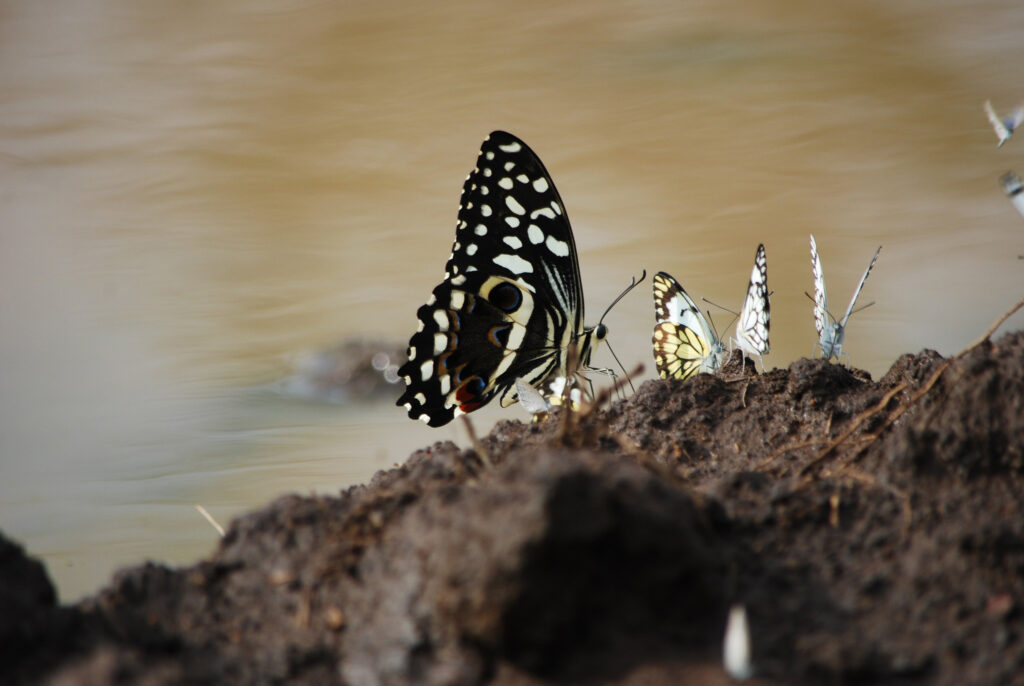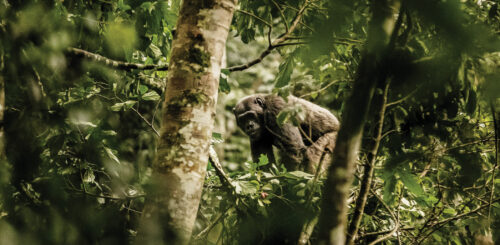Gone are the days of traveling without consideration for the impact you’ll have on the people and places you’re visiting. Travel is a force for good when planned with care, and at Extraordinary Journeys, the conservation of communities and wildlife is at our core. We support our many partners in their incredible work to conserve the natural environment, wildlife, and biodiversity. This goes hand-in-hand with community uplift through employment and investments in healthcare, education, training, and development. When you book a trip with us, it’s sustainable—full stop. Consider us the slow fashion equivalent of travel: ethical, intentional, and connections-based. Read on as we highlight some of our favorite hands-on, conservation-focused safaris in African destinations where your travel directly contributtes to conservation.
1) Get actively involved in rhino conservation with Marataba Conservation Camps in Marakele National Park, South Africa

Want to learn how to identify rhinos and track their movements? Marataba Contractual National Park is home to an important rhino population that includes the critically endangered black rhino (there are about 6,000 left in the world) and the near-threatened white rhino (with a population of less than 16,000). Their most serious threat is the current onslaught of poaching—horns are used in many cultures for medicinal and spiritual purposes—forcing populations into decline.
Marataba is a 518,920-acre privately-managed section of Marakele National Park—uniquely situated where lush bushveld meets the Kalahari sands in South Africa’s Limpopo province. Here, you can help immobilize a rhino, notch its ear for identification purposes, microchip its horn and body for trackability, and collect DNA samples for analysis.
2) Take part in the butterfly monitoring walk with African Parks in Akagera National Park, Rwanda

Inside Rwanda’s Akagera National Park, monthly butterfly surveys are carried out by the African Parks team by walking a 0.6 mile-long transect at each site during sunny weather around midday—and if you time your visit right, you can take part. Monitoring butterfly populations is an important method for measuring change in the environment and assessing habitat biodiversity.
Akagera’s transects are laid at six permanent sites across the park: Birengero, Mihindi, Mutumba, Nyungwe, Ruzizi, and at park headquarters (which happens to have the most butterfly activity!) To date, the African Parks conservation and research team has identified 164 specials belonging to 65 genera. The survey team identifies individual butterflies by species based on morphology, color patterns, and wing texture. Species richness and abundance are influenced by habitat type, vegetation structure, food-plant and water availability, and elevation. Butterflies are a key indicator of environmental health, so long-term monitoring may inform park management about potential changes in habitat quality or climate.
3) Identify lowland mountain gorillas in Odzala-Kokoua National Park, Republic of Congo

Looking for a true jungle adventure? If you’re not afraid to get a little wet and dirty, how about journeying into one of Africa’s oldest national parks? We’re talking trekking through baïs, navigating dense jungle, and wading waist-deep in the Congo River in search of endemic wildlife, which you’ll photograph to help researchers track and identify. Odzala-Kokoua National Park in the Republic of Congo is a biological hotspot that harbors critically endangered western lowland gorillas, elusive forest elephants, and more than 440 bird species. Check into Ngaga Camp (and then onto the others), which started as a base for primate research and has since expanded to three camps, each located within a distinct biome. Rest easy knowing your stay positively impacts gorilla and elephant research and protection, as well as rainforest conservation efforts.
4) Monitor wildlife with Usangu Expedition Camp in Ruaha National Park, Tanzania

If you’re looking for a real, hands-on citizen science experience in Africa, Usangu Expedition Camp—set on the outskirts of the Usangu floodplains and wetlands, deep in the remote southern corner of Ruaha National Park—offers an immersive, conservation-driven experience for the adventurous traveler. The region is of critical conservation importance and home to many unique species, from ostrich to unidentified amphibians. Taking part in a safari on foot, by Land Cruiser and boat is an incredible way to combine adventure travel with scientific research and conservation efforts. Guests get access to ongoing research projects in the Douglas Bell Eco Research Station and can take part in tracking, darting, and collaring lions, leopards, elephants, and wild dogs. You’ll collect data by taking photos, setting up trail cameras, and collecting soil samples (and other activities typically reserved for biologists), which are gathered to help scientists better understand and protect the fragile ecosystem. The intimate four-tent camp is one of the hottest new openings as of late in Tanzania (read more on our blog here).
5) Plant spekboom and immerse into the community in Kwandwe Private Game Reserve, South Africa

A Kwandwe safari is diverse and flexible, full of opportunities to get involved with conservation including spending time with the community at the Mgcamabele Community Center or getting involved with a 3.5-hour rhino monitoring drive. On the drive, you’ll join Kwandwe Private Game Reserve’s ecological team, who watch and protect a notable population of black and white rhino. The experience focuses on finding specific individuals, learning about their habits, and discussing the issues of rhino poaching.
Something unique to Kwandwe is the opportunity to learn about and plant spekboom—the most important plant in the region. Also known as ‘the wonder plant of South Africa’ for its medicinal properties, the succulent helps rehabilitate soil that has been degraded by years of heavy agricultural use. Spekboom performs something called C.A.M. (Crassulacean Acid Metabolism) photosynthesis, which allows it to sequester carbon dioxide during the day to perform photosynthesis at night. The roots hold the carbon and allow infiltration to the soil from rainfall events and into the leaves from the water. Fun fact: it’s also edible. So far, many local jobs have been created, and more than 350,000 spekboom have been planted so far (in just three months). There’s a five-year goal to plant eight million, part of a wider 30-year plan to grow wilderness areas that will become suitable habitats for black rhino, cheetah, and other wildlife.
6) Join a community conservation safari in Hwange National Park, Zimbabwe

Want to take a safari that makes a difference? A visit to African Bush Camps projects in Zimbabwe and Zambia is unparalleled in terms of getting involved with community conservation. These safaris include visits to the projects in each of the communities bordering the national parks. From Bumi Hills Safari Lodge, Somalisa Camp, and Thorntree River Lodge, you’ll see how the partnerships African Bush Camps have forged link directly to the benefits and value of tourism in the region. Without communities, there is no such thing as conservation, and these safaris allow you time to meet with anti-poaching units that are working 24/7 to minimize human-wildlife conflict—one of the most significant threats to wildlife in the region. You’ll learn how partnering with the communities helps the locals improve their quality of life and achieve long-term conservation goals through community empowerment and education. So, not only will you get a chance to explore the beautiful national parks in Zambia and Zimbabwe with river and land activities, you will have the unique opportunity to understand more about the intricate world of conservation first-hand.

- Itinerary
Primates and Lakes: Gorillas, Monkeys, and Adventure in Rwanda
Unforgettable primate encounters, culture and luxurious lodging

- Itinerary
Congo Basin Discovery: Republic of Congo and Central African Republic
Gorilla tracking and outdoor adventure

- Itinerary
Malaria-Free South Africa for Families
A malaria-free safari and time in Cape Town
